Have you ever wondered what smoke is and why food that’s been touched by smoke tastes so good?
Considering smoke is an essential ingredient in barbecues, it’s well worth learning a little more about the science behind it and how it flavors food.
Don’t worry, you don’t need a chemistry degree to learn some valuable tips that will improve your barbecue.
What is smoke?
Smoke is a combination of tiny, unburnt particles that are released when we burn something, in this case, wood.
When burned, wood’s volatile organic compounds break down and turn into smoke, creating an unmistakable flavor that cannot be replicated in an oven.

The most important components of wood smoke are an oil known as syringol and a substance known as guaiacol. Both syringol and guaiacol are produced when a plant polymer present in wood, called lignin, is burned.
These substances are predominantly responsible for that smoky taste you enjoy.
How does smoke flavor meat
We all know that meat “takes on smoke” during barbecue, but how does the smoke actually flavor the meat?
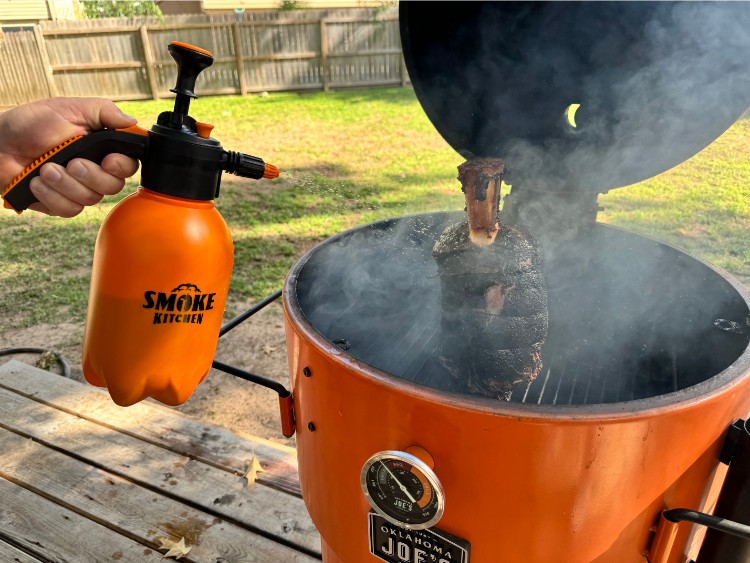
As meat sponges up smoke, a whole host of fascinating chemical processes are actually going on.
“Meat contains tools for memorializing the character of that smoke in a detailed flavor snapshot. Water, fat and proteins embedded in a piece of barbecue each capture a different angle of the smoke’s portrait.”
The Science of Barbecue
Proteins and trace sugars “fuse and explode“, causing the crusty bark.
Nitric oxide and other chemicals in the smoke react with the iron in the meat, causing the pink smoke ring.
Very little of the smoke you generate actually comes into direct contact with your meat. This is due to the tiny amount of stationary air that surrounds objects.
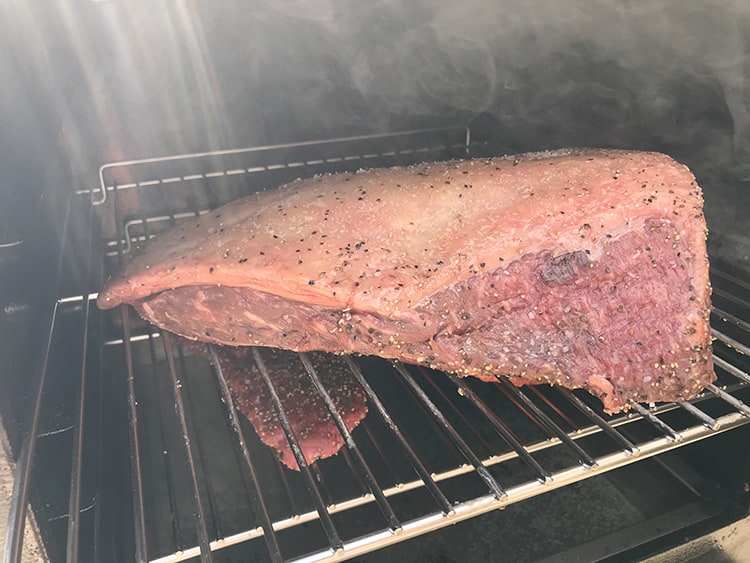
Wetting your meat or using a rub can make a huge difference in reducing this boundary effect and imparting more smoky flavor to your food.
Particles move from warm to cool surfaces in a process known as thermophoresis.
As your uncooked meat is cooler than the air rising from your fire, the smoke will be attracted to your food. Wet surfaces also tend to trap the smoke.
As smoke cannot penetrate into your cut of meat, most of the smoky flavor will be on the surface. A small amount will make it through to the first quarter of an inch or so, resulting in that coveted pink smoke ring.
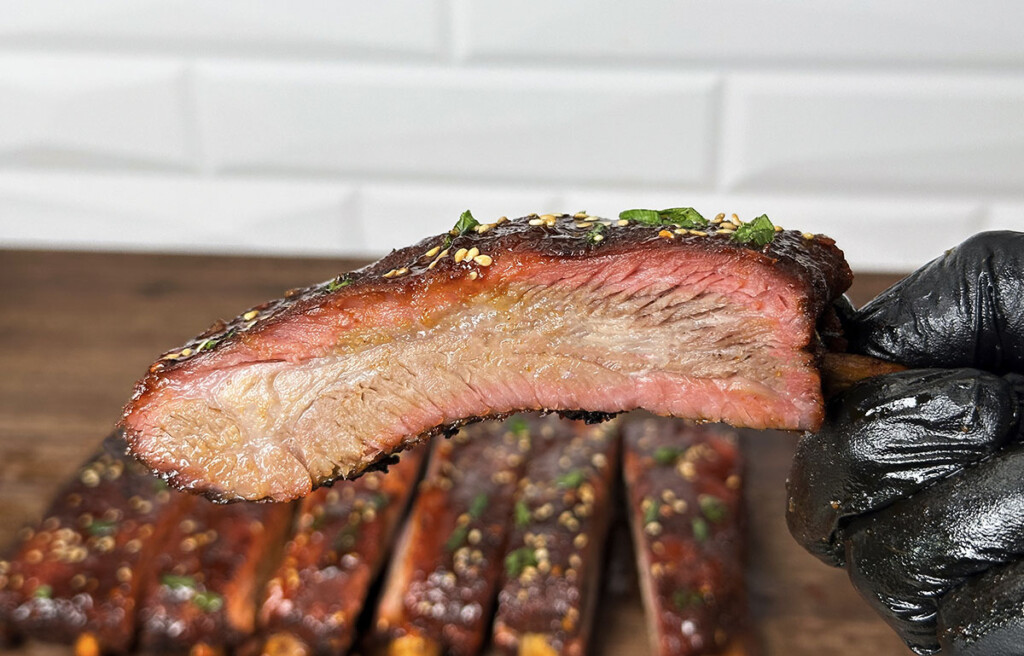
The smoke ring is caused by a reaction between myoglobin and the gases nitric oxide and carbon monoxide released during the combustion process.
Does meat really stop taking on smoke?
It’s a common belief in the barbecue community that meat stops taking on smoke at a certain point.
There is some truth to this. As we talked about already, smoke tends to stick better to cold and wet surfaces so it’s natural that as your meat cooks, less smoke will stick.
But there’s no magical process that stops the meat from taking on smoke.
Meats that are smoked for longer tend to have smokier flavors, it is a myth that meat stops taking on smoke after two hours!
Provided you keep adding more wood, your meat will continue to take on more and more smoke and flavor. You can also lightly spritz or baste your meat throughout the cooking process to get even more smoke absorption.
From Our Shop
Smoke Kitchen BBQ Sprayer
Keep your barbecue nice and moist with this 68 OZ pressurized spritz bottle.
Pros:
- Control spray from a fine mist to a solid stream
SHOP NOW
Too much of a good thing?
Believe it or not, it’s possible to have too much smoke.
Too much smoke will make your meat taste bitter, a far cry from that delicious hint of complex smokiness you were aiming for.
It’s best to use a little less wood than you think and then you can increase quantities for extra thick cuts. However, as a rule of thumb, less is generally better.
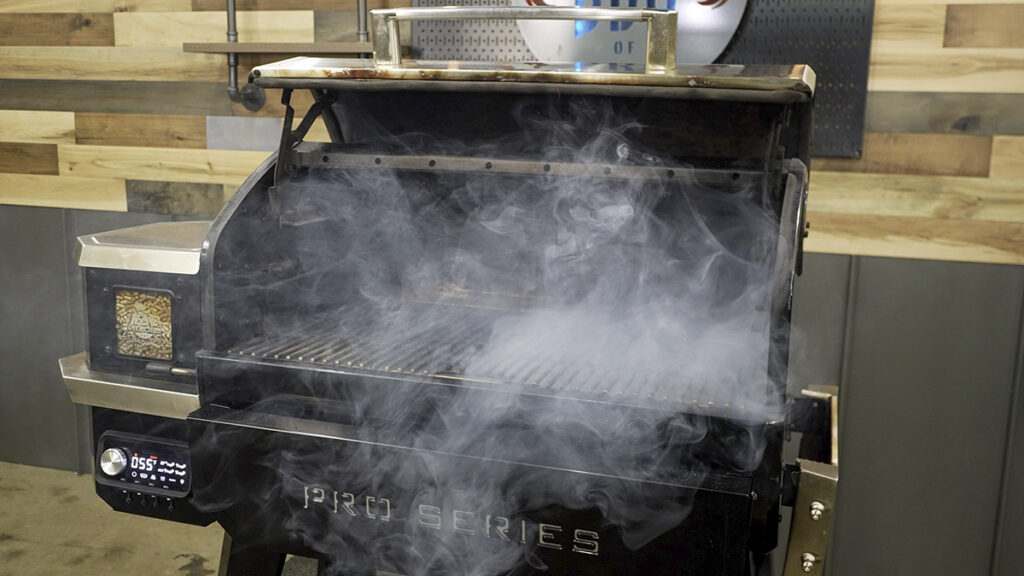
You don’t need to be as careful with a pellet smoker, as these produce a lot more subtle smoke, although you still don’t want to add your meat until that initial burst of smoke has subsided.
It’s also important to understand the difference between good smoke and bad smoke.
Before you add your meat, you’ll make sure your smoker is putting out the right type of smoke
Typically described as thin, blue smoke, good smoke will give your meat its delicious flavor.
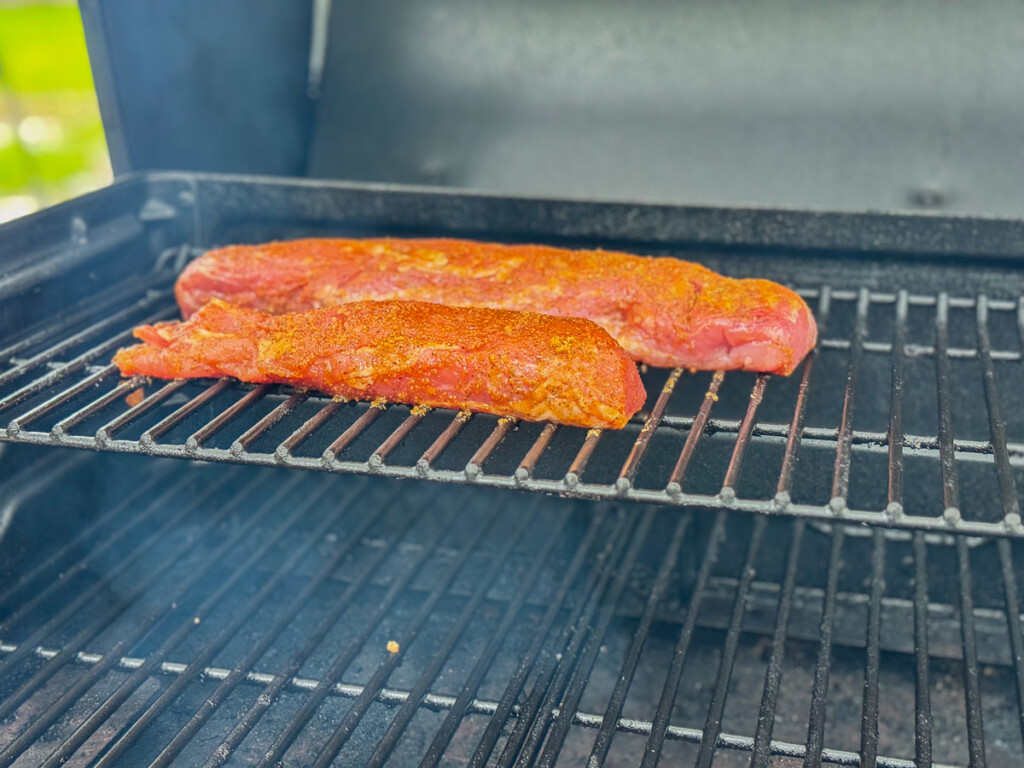
Good smoke is hard to capture on camera!
Bad smoke, on the other hand, creates a bitter flavor with an oily aftertaste.
How to generate smoke
We generate smoke through combustion, which involves the thermal conversion of fuel with oxygen, creating carbon dioxide and water vapor.
Or, in simple terms, you make smoke by burning something!
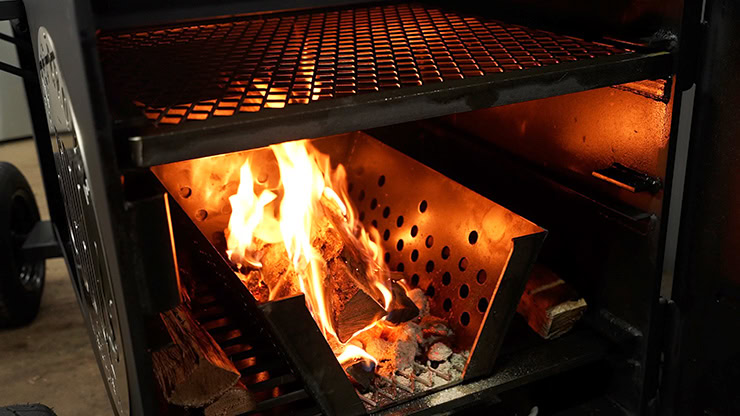
If you have complete combustion, everything burns, resulting in just CO2 and steam production.
However, when you burn wood on a smoker, not everything burns completely – a process known as incomplete combustion.
Wood is made up of volatile organic compounds, which become gases when heated, as well as carbon, minerals, and water.
It is the evaporation of these volatile organic compounds that creates the flavorful smoke that makes your smoked brisket so delicious.
Different methods for generating smoke
You can generate smoke in various ways depending on the type of smoker you are using.
- Logs – Wood splits are used in an offset smoker or pit BBQ. They take a lot more care and skill to produce good smoke for barbecue.
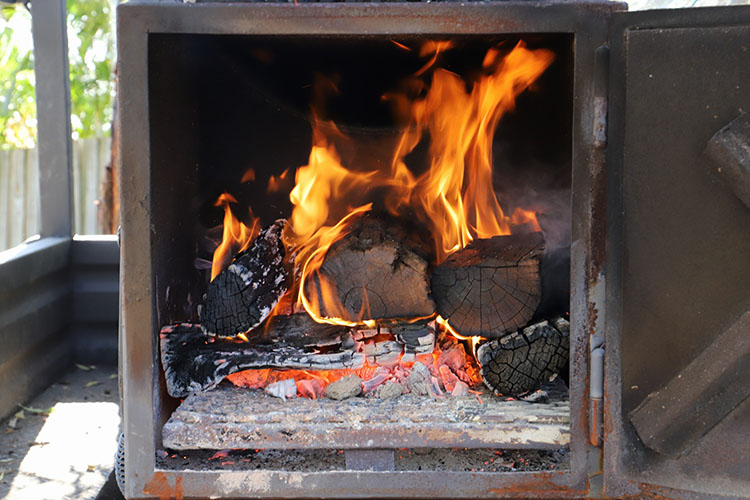
- Wood Chunks – Smaller than logs, larger than wood chips. Chunks are commonly used with charcoal smokers where chips would burn up too quickly, but you don’t need the wood to actually produce heat.
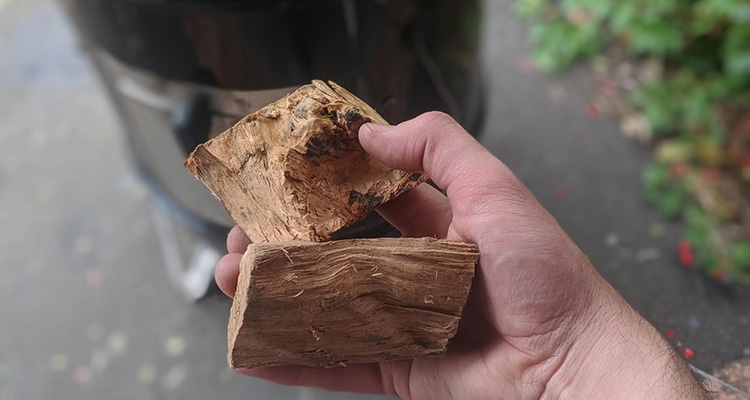
- Wood chips – Wood that has been passed through a shredder. They burn faster than pellets and are commonly used with gas and electric smokers or to add an extra burst of natural smoky flavor to other grilling methods.
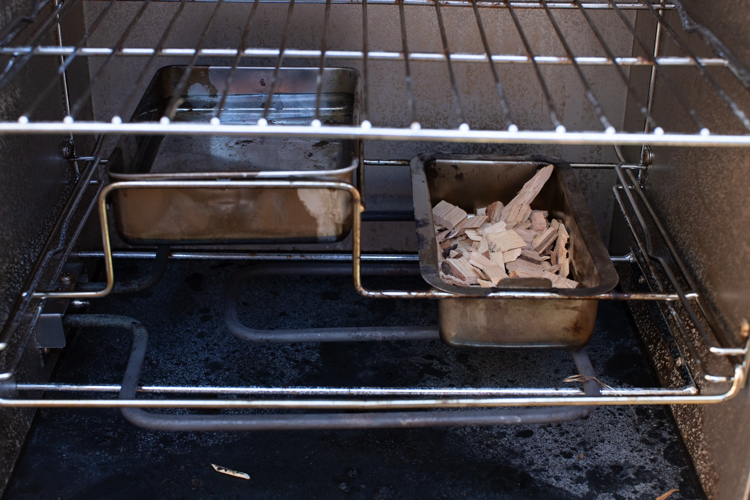
- Pellets – Smoking pellets are made from finely ground hardwoods. They burn hotter and slower than wood chips and supply a consistent smoke. They can be used in smoke tubes and pellet smokers.
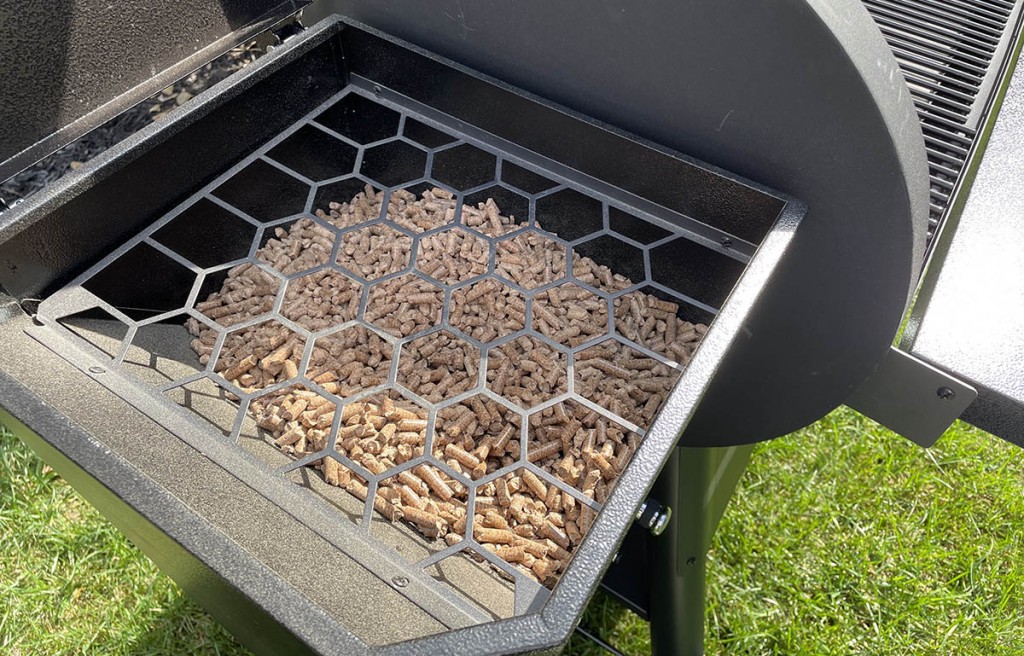
The best woods for barbecue
You could have a whole book dedicated to this topic. The short version is that hardwoods are the best woods to use for smoking, with fruitwoods being particularly good.
Always avoid softwoods and use dry wood.
Here are some of the most popular woods for generating smoke—try out several and find your favorite!
- Hickory – strong and pungent, hickory is a popular option to go for.
- Mesquite – possibly produces the strongest smoke flavor. Go for it if you really want a very powerful smoky taste. Otherwise, it can be a little overpowering.
- Apple & Plum – medium level of smokiness, apple also provides a high-temperature burn with excellent embers, along with plum tree wood.
- Maple & Alder – if you prefer a milder smoked flavor for use with easily overpowered meats, then try smoking with maple or alder. Alder is a good choice for cooking low and slow, while maple burns hot.
Some folks get really serious about combining certain types of wood with different proteins, but in our opinion, unless you have a crazy pallet, the quality of meat you use and the seasonings will have a far larger impact on the final flavor.
You can smoke more than just meat
If you just can’t get enough of that intense smokey flavor, why not try smoking other foods? You can smoke your own desserts, cheese, nuts and even cocktails!
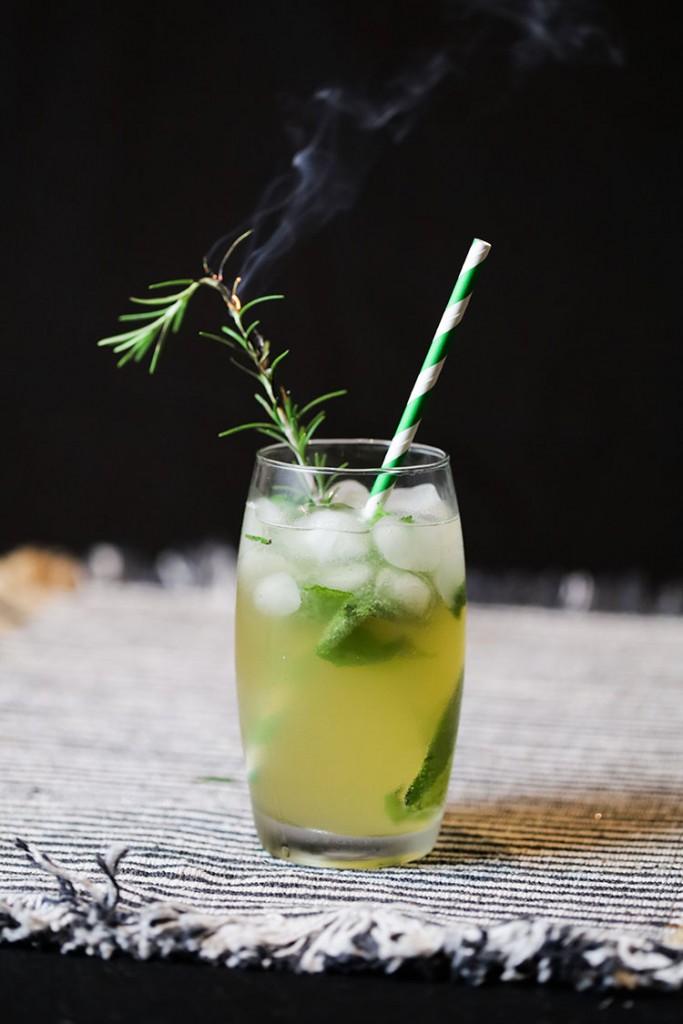
Here are some of our favorite ideas.
- Smoked desserts – Smoke your icecream for a subtle, smokey yet creamy addition to your dessert. Try smoking your cupcakes, bread puddings or cobblers. Adding a hint of smoke with a contrasting sweet taste will have your taste buds tingling from the very first mouthful.
- Smoked cheese – Lightly smoke your regular hard or semi-hard cheese for a whole new taste dimension. It’s surprisingly easy and will give you deli-style, premium-price cheese results.
- Smoked nuts – How about starting off your BBQ party with an aperitif and some home-smoked nuts to get the evening started? Use raw, fresh nuts, simply soak them in water for a few minutes, then smoke. You can also flavorings, such as spices or sugar, or use oils and sauces instead of water.
- Smoked cocktails – Play it simple and add a smoked fruit garnish to your favorite cocktail. Or up the steaks a bit and smoke fruit puree, wine or vermouth. Place your liquid into a foil pan and that pan into a larger ice-filled pan. Place on your smoker and hot smoke for around half an hour for a seductively smoke-laden beverage.
Did you miss our previous article...
https://manstuffnews.com/backyard-grilling/rotisserie-pork-loin-recipe
 Backyard GrillingWeekend WarriorsAdvice from DadBeard GroomingTV Shows for Guys4x4 Off-Road CarsMens FashionSports NewsAncient Archeology World NewsPrivacy PolicyTerms And Conditions
Backyard GrillingWeekend WarriorsAdvice from DadBeard GroomingTV Shows for Guys4x4 Off-Road CarsMens FashionSports NewsAncient Archeology World NewsPrivacy PolicyTerms And Conditions
